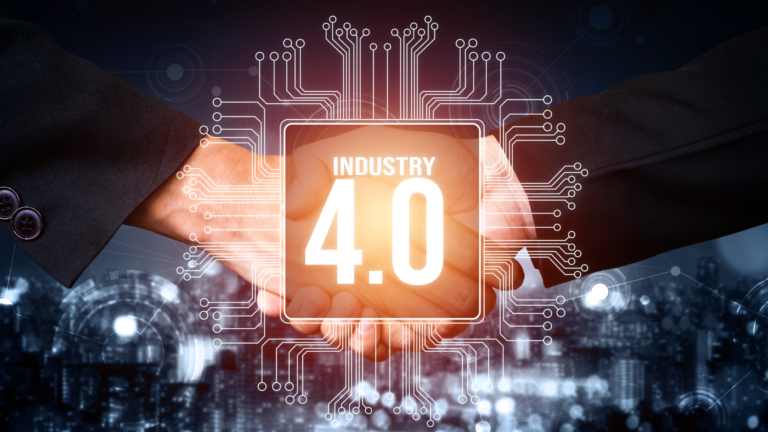The pressure on industries to maintain high-quality standards while maximizing efficiency is significant and unrelenting. But, traditional methods of quality control and defect detection are often insufficient. This article explores the business benefits, implementation strategies, and challenges of adopting Genomics of Industrial Processes in industrial environments.
In our previous article, we introduced Genomics of Industrial Processes, how it works and what makes it different. In this second article, we look at what this new approach of Genomics of Industrial Processes means in practice – how to implement it, how to overcome the challenges, and the business benefits that it unlocks.
Implementing Genomics of Industrial Processes into Industrial Processes
Let’s start with how to effectively implement Genomics of Industrial Processes. By following a step-by-step process – and bringing the business along with them – tangible business benefits can be realised.
- Data Acquisition and Monitoring: Begin by establishing real-time systems to track key events and parameters. This requires the installation of sensors to measure critical factors like temperature, pressure, and material flow.
- Event Clustering and Sequence Mapping: Once the data is collected, the Genomics of Industrial Processes system clusters related events and maps them into process genes. This involves examining the relationships between events and identifying sequences that lead to successful outcomes or defects.
- Predictive Analytics: With identified process genes, predictive analytics can be applied using machine learning algorithms to forecast the likely outcomes of the production process. This step enables manufacturers to pre-emptively address issues based on historical patterns.
- Real-Time Adjustments: When a potentially defective sequence is detected, the system makes real-time adjustments. These could include altering machine settings, modifying material inputs, or adjusting environmental factors to prevent defects.
- Continuous Improvement: As more data is gathered, the Genomics of Industrial Processes system becomes increasingly adept at predicting defects and making the necessary adjustments, leading to greater efficiency and reliability over time.
Overcoming Implementation Challenges in Complex Environments
However, even with the 5-step approach outlined above, there are several challenges that manufacturers must address to successfully implement Genomics of Industrial Processes in their organisation and processes.
- Data Availability: Implementing Genomics of Industrial Processes requires real-time access to accurate data on system inputs and outputs. Manufacturers should invest in modern data acquisition technologies, such as optical sensors and real-time monitoring systems, to ensure the availability of necessary data.
- Complexity of Industrial Systems: Manufacturing processes often involve numerous variables that can impact product quality. To address this complexity, Genomics of Industrial Processes uses dimensionality reduction techniques to focus on the most critical factors affecting quality. Additionally, machine learning algorithms help manage complex interactions between variables.
- Integration with Existing Systems: Implementing Genomics of Industrial Processes may require integrating it with existing equipment and control systems. To facilitate this, manufacturers can introduce Genomics of Industrial Processes as a modular system that operates alongside current infrastructure, allowing for gradual adoption.
- Training and Expertise: Successfully adopting Genomics of Industrial Processes requires expertise in data analytics and industrial systems. Partnering with technology providers or consultants can help manufacturers gain the knowledge and support needed to train staff and operate the system effectively.
The business benefits of Genomics of Industrial Processes
One of the most compelling advantages of Genomics of Industrial Processes is its impact on reducing defective products. Unlike traditional quality control methods that rely on post-production inspections, Genomics of Industrial Processes predicts and prevents defects as they occur. This leads to a reduction in waste and scrap, improved product quality and significant cost savings. By eliminating the need for extensive manual inspections, companies can streamline operations and enhance their reputation for delivering reliable, high-quality goods.
Another key benefit is the ability of Genomics of Industrial Processes to facilitate real-time adjustments during production. Instead of waiting until the end of a production run to identify defects, the Genomics of Industrial Processes system continuously monitors events and parameters, making adjustments to maintain optimal performance. This approach not only minimises downtime but also accelerates the overall production process.
Furthermore, Genomics of Industrial Processes supports predictive maintenance by monitoring sequences of events that indicate potential equipment failures. This capability allows manufacturers to schedule maintenance proactively, reducing costly breakdowns and extending machinery lifespan. As a scalable solution, Genomics of Industrial Processes can be applied across various manufacturing environments –from semiconductor production to large-scale industrial processes in sectors such as food & beverage or aviation manufacturing.
Conclusion
The applications of Genomics of Industrial Processes extend across various industries and processes. By leveraging the power of Genomics of Industrial Processes, manufacturers can predict defects, enhance product quality and improve operational efficiency. Implementing Genomics of Industrial Processes is a strategic investment that can reduce waste, optimise resources and strengthen competitiveness in the long run.
For manufacturers undergoing digital transformation, Genomics of Industrial Processes powers comprehensive solutions that combine proactive quality control with predictive maintenance and real-time process optimisation. By overcoming implementation challenges and adopting this innovative technology, organisations can position themselves for long-term success in an evolving industrial landscape.
















